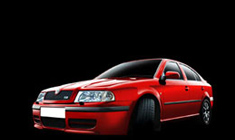News
Loophole in Global NCAP's protocols is affecting car crash test results
There's one specific but significant clause which I think makes no sense. Some cars can improve their safety ratings by offering worse crash protection.
BHPian ron178 recently shared this with other enthusiasts.
Those of us who've been following Global NCAP's safety ratings for a while now know they overhauled their assessment protocols in July 2022, adding more crash and safety tests than before. (Related thread)
But this thread is about one specific but significant clause in Global NCAP's new criteria that I think makes no sense. Allow me to explain why.
(There are other threads to discuss the new tests as a whole or opinions about the organisation)
Caution:
- It might be tempting to quote parts of the post out of context and jump to conclusions in the broad sense
- But this is a very specific logical flaw manifested only when specific conditions are met, not a characteristic of GNCAP or the new tests just "broadly speaking".
- Please be patient and carefully understand the problem, the number-crunching is very elementary
To keep things simple, I'll maintain this order of posts:
- Preliminaries
Just the parts of Global NCAP's scoring criteria you'll need to know beforehand - The problematic clause
The paragraph that causes the problem, and Global NCAP's intention behind adding it in the first place - Problem #1
How a car might be unfairly penalised - The vulnerability
How making a car less safe can get it +1 star
Useful external links
Global NCAP 2022-25 protocols
Latin NCAP: 2016-19 protocols
Global NCAP: 2022 Maruti Suzuki Swift
Global NCAP: 2024 Citroën ë-C3
Global NCAP: 2022 Maruti Suzuki S-Presso
Latin NCAP: 2018 Renault Sandero
Latin NCAP: 2018 Nissan March
Preliminary: GNCAP star rating calculation
Before understanding what's going on, one must be familiar with how GNCAP calculates star ratings at least at the superficial level. (For a more detailed explanation, see this).
If you already know this well enough, proceed to the next post.
Test score
The maximum test score is 34 points: 16 each for the front and side barrier crash tests and up to 2 for seatbelt reminders.
Qualifiers
In addition, there are simple "yes/no" qualifying criteria for fitment or test performance of electronic stability control, pedestrian protection, seatbelt reminders, curtain airbags and the side pole impact test. But they do not add to the score.
Star rating
For each star rating, there is a minimum total score as well as requirements for each qualifier category.
A car's star rating is most often simply the highest possible rating for which it meets ALL requirements. GNCAP have nicely summed it up in this table:

Exceptional cases
Sometimes there is a special "cap" on the star rating when a body part that's important to life (head/chest) shows a very high risk of serious injury in the front or side barrier crash tests.
If numbers from the dummy show an unacceptably high risk of serious injury, the result is zero stars no matter what.
Sometimes, the dummy numbers for a body part don't necessarily show an exceptionally high risk of serious injury, but Global NCAP nevertheless thinks other factors may compromise protection. In this case, if protection for the body part is rated poor after all extra penalties, the star rating is bounded by 1 star.
The clause we need to discuss
This thread revolves around this clause added by GNCAP in 2022:

What it says, basically, is that cars whose front and side impact scores differ by more than 5.6 points (35%) will have one star chopped off their star rating.
Sounds funny already? Hold your horses. Let's understand why they're doing this.
A quick look at past protocols of Latin NCAP shows that this clause was added a few months after their first big protocol change in 2016, on which GNCAP's new protocols are actually largely based.
Trivia: SUVs and the side impact test
You see, the side impact barrier uses sits quite low to the ground and represents a small car (950kg).
This means SUVs, pickups or other vehicles with high driver seats usually do exceptionally well in the test by virtue of their height, even if they're not in the least engineered for it.
For example, this really badly engineered Great Wall pickup truck still managed nearly full points in a side impact test.
SUVs, in fact, have such an advantage in the side impact test that European legislative side impact testing straight up exempts vehicles whose driver seats are higher than 70 cm. A while ago, even the Australasian NCAP used to just give high-riding vehicles full marks and save themselves the cost of another car.
The argument for the clause
To prevent badly engineered cars from scoring high ratings by unfairly racking up points in just one test, NCAPs employ different countermeasures.
The Australasian NCAP used to require a minimum individual score in each test for a five-star rating, a move that received significant flak when reversed.
Global NCAP, instead, has introduced the 35% clause we're focussing on in this thread. To refresh your memory:

Problem #1
Let's try to understand the clause.
Remember this table?

Now look at the clause again:

Here's how I interpreted this when I first looked at the protocols:
If the difference in the front and side impact scores is >35%, then the maximum star rating that the total score can allow must be reduced by one.
That, IMO, would prevent cars from getting an undue advantage from doing well in just one test.
Global NCAP, however, doesn't think so.
To illustrate my point, I'll turn to the safety enthusiast's all-time favourite: the Maruti Swift.


Look at the table at the top of the post, and let's try to compute Swift's star rating.
Step 1: The Swift has a total crash test score of 19.19, which can allow a maximum of 3 stars
Step 2: However, the Swift has 12.9 points in the side impact, and only 6.3 in the frontal impact. That's a difference of 6.6 points (41%)!
Mm mm, the Swift is getting an unfair advantage by doing disproportionately well in the side impact, so we need to shave off a star: that makes it 2 stars.
Step 3: There are no other requirements (see table) for a 2-star rating, so that should be its final result.
Except it's not.
Clearly, there is something else making the Swift a 1-star car.
After a lot of discussion some of us had hypothesised last year that we might be interpreting the clause wrong. See discussion.
This is a little funny
Last year after scouring GNCAP's protocols for any alternate explanation, I wondered out loud if maybe - just maybe this is how GNCAP actually applied the penalty:
Step 1: The Swift has a total crash test score of 19.19 points, a maximum of 3 stars.
Step 2: The Swift didn't go through pedestrian or ESC testing (I'll ignore why, that can be a whole thread in itself), so it cannot score more than 2 stars no matter what its crash test score is.
Step 3: Because the side impact score is >35% more than the frontal impact score, deduct a star. Bingo: we finally arrive at one star.
Tell me I'm not the only one who sees the problem.
Let me break it down: Thanks to the "lack" of ESC/pedestrian protection, the Swift's good side impact score couldn't possibly have helped its star rating, which would be stuck at 2 stars no matter how well it scored. Yet the Swift was penalised, because its side impact score was...too good?
I thought I'd cope with the dissonance until there was more evidence.
GNCAP can't possibly be incompetent enough to overlook this. Right?
Proof
Thanks to Stellantis' Safety Shenanigans, all the evidence I was looking for came on a plate last week.

Look at the Citroën ë-C3's crash test result more closely:
Frontal impact: the protection offered to the driver’s and passenger’s head and neck was good. Driver’s chest showed weak protection while passenger’s chest showed poor protection limiting the result to one star. Driver’s knees showed marginal protection as they can impact with dangerous structures behind the fascia, passenger’s knees showed good protection. Driver’s tibias showed marginal and good protection and passenger’s tibias showed good protection. Footwell area was rated as unstable. The bodyshell was rated as stable and it is capable of withstanding further loadings.
Side impact: head showed marginal protection, chest showed adequate protection and abdomen and pelvis showed good protection. The difference between front and side impact made the car to lose one star in the overall result.
Let's get this straight. The ë-C3 had some 13.5ish points (out of 16) in the side impact, almost as good as it gets without side airbags.
But because of the 1-star cap because of high belt loads in the frontal impact, it wouldn't have mattered how well it scored in the side impact.
Yet GNCAP decided to penalise the ë-C3 because its side impact was so good it could be unfair (was it?).
See the problem?
The vulnerability
Unfortunately this is not just about penalising cars that are already at the bottom of the safety ladder.
Some cars can improve their star ratings by offering worse crash protection.
Outrageous claim, right? Let's turn to another Maruti, the Ignis.
It might be closely related to the Swift, but just look at the difference in side impact protection. High risks of serious skull and rib fracture, doors flying open: the Ignis' side impact protection is as bad as it can get without failing India's side impact legislation.
The Ignis is a 1-star car fair and square, because of the poorly protected chest in the side impact test.

But get this: Maruti must be thanking their lucky stars that the Ignis didn't do better in the frontal crash!
Had the Ignis scored more than 12.5 points in the frontal crash, not only would the result still be capped at 1 star because of the bad side impact, the huge difference in scores would make it a zero-star car. That is a very serious problem!
Don't believe me yet? Let's look at Global NCAP's blue-eyed boy the Maruti S-Presso.

Because of unacceptably high rib deflection in the frontal impact, it's also capped at 1 star fair and square, much like the ë-C3 is.
But thanks to its slightly worse side impact protection, its side test score is similar enough (3.77 pts or 24% difference) to its bad frontal impact, and it has escaped a 0-star rating just because its scores are consistent.
So did this Brazilian Renault Sandero that Latin NCAP tested in 2018. Bad news indeed!
For example
So, then, what's the easiest way for Stellantis to upgrade the ë-C3 to one star? (Notwithstanding the fact that they probably don't care enough to do so)
Add more safety features? Well, that could work but Stellantis has a cheaper option.
The ë-C3 has some 20 points out of which 13.5 are from the side impact. To score 1 star all that a car needs is a total of 4 points in both tests. So all the ë-C3 has to do now is escape the ridiculous penalty for inconsistency.
And the cheapest way to do that is by getting its side impact to be bad enough to match its frontal impact. Seriously, it just needs to lose some 0.6-ish points in the side test and it would score one star. It'll still be comfortably above the meagre 4.00-point (front+side) requirement for 1 star.
Surely automakers aren't petty enough to exploit a vulnerability like this, right? Of course not. They'd never do something like that.
Check out BHPian comments for more insights and information.
News
4th-gen Suzuki Swift scores 4 stars in Japan NCAP crash tests
The new Swift scored 88.7 points out of 89 and secured an ‘A’ grade for preventive safety performance.
The fourth-generation Suzuki Swift has been awarded a 4-star safety rating by Japan NCAP. The report has been released just weeks ahead of the launch of the new Swift in India.
In tests conducted by JNCAP, the new Swift scored 177.8 points out of 197. It secured the highest points for preventive safety performance. The top-spec Swift sold in the Japanese market comes equipped with ADAS, which includes features like adaptive cruise control, autonomous emergency braking and lane departure prevention; among others.
The new Swift scored 88.7 points out of 89 and secured an ‘A’ grade for preventive safety performance.
The new Swift scored 81.1 points out of 100 for occupant protection in the event of a crash. The car was subjected to a full frontal test at 55 km/h, a frontal offset test at 64 km/h, a side impact test at 55 km/h and a rear-end collision test.
JNCAP also evaluated the Swift for pedestrian safety. The car scored 2.7 points out of 4 for pedestrian head protection, 2.8 out of 3.6 points for passenger seat belt reminder and received a full score for pedestrian leg protection and its emergency call system.
- Tags:
- Indian
- Maruti Swift
- NCAP
- crash test
News
Mahindra Scorpio N scores 0 stars in Australian NCAP
The Scorpio N neither gets an Autonomous Emergency Braking (AEB) system, nor a lane support system.
The Mahindra Scorpio N has been awarded a 0-star rating by the Australian NCAP. The SUV scored 44% for adult occupant protection and 80% for child occupant safety. However, the 0% Safety Assist score resulted in the Scorpio N failing the test.
As per the test report, the passenger compartment remained stable in the front offset test. Protection of the driver’s chest and lower legs was adequate. Protection was good for all other critical body regions for both the driver and front passenger.
In the full-width frontal test, the protection of the driver was rated as weak for the chest and good for all other critical body areas. Protection of the rear passenger’s head, neck and chest was poor.
In the side impact test, the protection offered to all critical body regions of the driver was good. However, the driver's seatbelt was observed to unlatch during the impact, increasing risk of the potential injury.
In the oblique pole test, protection was marginal for the chest of the driver and good for all other critical body regions.
In the frontal offset test, protection of the neck and chest of the 10-year-old child dummy was rated as marginal. Otherwise, the protection of both child dummies was good. In the side impact test, the protection of both child dummies was good.
Dual frontal, side chest-protecting and side head-protecting airbags are standard on the Scorpio N. However, it neither gets an Autonomous Emergency Braking (AEB) system, nor a lane support system.
News
NCAP safety ratings: What happens to cars after they are crash tested?
Are they sold off as new cars after getting repaired or do the companies keep them as a reference to make safer cars?
BHPian mgastor2022grey recently shared this with other enthusiasts.
Hey Friends,
We all know about the NCAP tests and star-rating provided to cars by them. But one thing has been racking up my mind for the past 2 days: What happens to these cars after they are tested?
I searched on Team-BHP - No answers. I searched on Google - No answers. So, I'm opening a new thread for this discussion.
My questions are:
- Will they be sold off as new cars after they are repaired?
- Will the non-damaged parts be used in future cars?
- Will the company have these cars as a reference to make safer cars?
Please throw some light on this, BHPians! Any response will be appreciated.
Here's what BHPian bijims had to say about the matter:
After a crash test, a car may be significantly damaged or even destroyed. The purpose of a crash test is to evaluate the safety of a vehicle in the event of a real-world collision, and the results are used to help improve the design and engineering of cars to make them safer for consumers. After the test, the cars are scrapped.
Even other test cars for that matter (like the camouflaged test mules you see on the road), are scrapped after the test runs are completed.
Here's what BHPian Turbohead had to say about the matter:
I don't know if they do, but the remains would be useful for the engineering team to compare how close their virtual crash model and analysis are compared to the real world.
There's no way manufacturers will bother fixing the car and selling it because that would require even more labour compared to what can be created in the factory.
Here's what BHPian Mr.Boss had to say about the matter:
Forget about NCAP testing, OEs build prototypes and production trial cars for several other testing and validation. Some are marked as saleable (when the car is made as per the final production spec, and used as a display vehicle or meeting certain protocols) and only those will be sold to market. These cars are just brand-new production cars that reach the dealership after a small detour (like display during launch events, journalist drives, etc).
Anything other than the saleable lot will be scrapped as per their internal policy and retention period.
Repairing or salvaging parts from these cars is not worthy for OEs for the below reasons.
- Not their nature of business (repair / resale)
- Performance couldn't be guaranteed (can't risk the brand image)
- Laborious job, consumes more time and cost than building and selling a new car
Here's what BHPian ron178 had to say about the matter:
Global NCAP once said it costs them more to ship Indian cars to the test lab in Germany than it does to buy and test them. There is no way they are shipped back to India and sold to customers.
Euro NCAP collects all post-test cars and presents them to industry representatives at an annual Manufacturers’ Viewing event in Brussels. Latin NCAP also sometimes joins them. After this, they are scrapped.
Here is a picture from their latest one:
Here's a quote from an article on Autocar UK
"Twice a year, all cars crash tested at Euro NCAP facilities are delivered to the Brussels headquarters so that car makers can scrutinise them. “We encourage them to share their insights,” says Avery. “However, we do ask them not to bring tools. Some have been known to take away parts of the cars for inspection.” So the crashed cars can never be repaired and returned to the road (yes, this has happened, although not with Euro NCAP cars), all of the wrecks are then crushed. For millions of drivers around the world, that sacrifice has not been in vain."
Check out BHPian comments for more insights and information.
- Tags:
- Indian
- NCAP
- safety rating
- crash tests
News
ANCAP to introduce vehicle submergence tests from 2023
The vehicle submergence testing will be part of ANCAP's Adult Occupant Protection Assessment area.
The Australian Independent Crash Testing authority (ANCAP) is said to introduce vehicle submergence testing from January 2023. The new criteria will be an extension to ANCAP's current rescue protocols, which assess vehicle accessibility after a crash.
Vehicle manufacturers will now have to provide evidence that passengers will be able to open doors & operate electric windows for up to 10 minutes after a vehicle has been submerged in water. This is to allow occupants to exit the vehicle safely.
If the windows or doors don't open, automakers are also required to provide a method which will allow occupants to safely break open the side window for escape. This information should be mentioned in the owner's manual.
The vehicle submergence testing will be part of ANCAP's Adult Occupant Protection Assessment area. The testing authority will also introduce new aspects in these tests to assess child presence detection systems. These systems will monitor the rear seats and doors to notify the driver or the emergency services if a child has been left in a locked car. The notifications will be indicated through visual and audible alerts, either via honking or by sending an alert to an app on the driver's phone.
Source: Car Expert
- Tags:
- Indian
- NCAP
- International
News
MG Hector NCAP safety rating to be revealed soon
The Hector's main rival, the Kia Seltos, secured a 3-star safety rating. The Tata Harrier is yet to receive a GNCAP rating.
UPDATE on 17 July: MG reached out to us and said that the tweet was incorrect and has been removed.
MG has posted on Twitter that it will be revealing the Hector's NCAP safety rating soon. The Hector's main rival, the Kia Seltos, secured a 3-star safety rating. The Tata Harrier is yet to receive a GNCAP rating.
The Hector is available as a 5-seater, while the Hector Plus is offered as a 6-seater and a 7-seater. It is offered with a host of safety aides including 6 airbags, ABS with EBD and brake assist, traction control, hill hold assist among others.
The SUV is powered by a 168 BHP, 2.0-litre diesel engine paired with a 6-speed manual transmission, a 1.5-litre turbo-petrol engine producing 141 BHP and 250 Nm mated to 6-speed manual gearbox, DCT, and a CVT, as well as a 1.5-litre mild-hybrid powertrain paired with a 6-speed manual gearbox.
- Tags:
- Indian
- Hector
- Hector Plus
- Safety
- NCAP
News
Driving an unrated / poorly rated car in the city only
But if I owned just a cheap hatchback, I would happily drive it in the city and rent a 5-star rated car for my road-trip holidays.
Simple question, although it might have complicated responses!
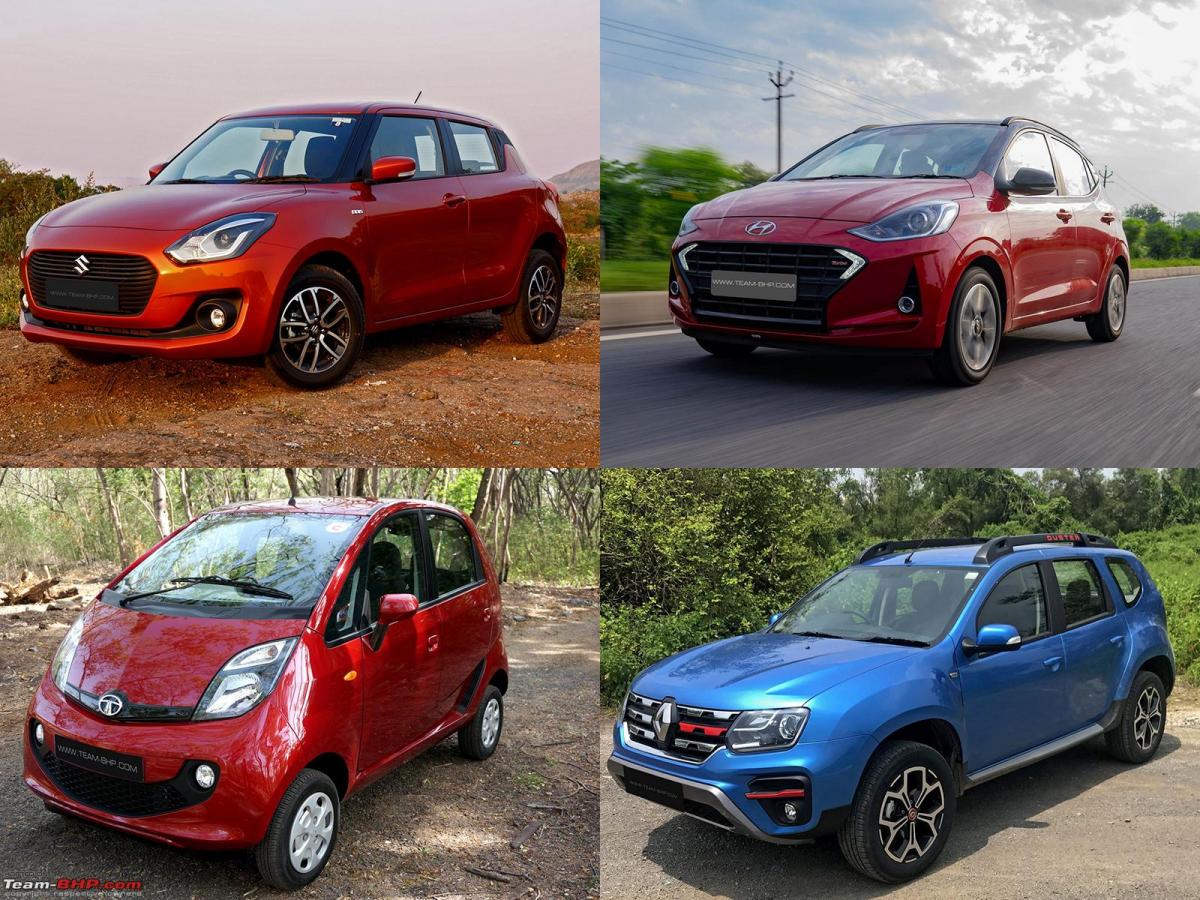
Going for what might be the unpopular opinion here = I have voted yes, but purely for the city only.
Reasons:
- I already do so with my 1997 Jeep which is a favourite for city driving. But I have strictly stopped highway runs with it due to its age & lack of safety. Even otherwise, the new rule in our family is that only the 2 German sedans go out on the highway. Jeep & Sunny = purely Bombay usage.
- Many of my family members do so as well. We have a couple of cheap Marutis & Hyundais doing duty as urban runners. A close pal uses the Seltos and I recently told her "go easy, and take your VW for highway runs".
- I also use Uber & Ola all the time. In fact, during a working day if I have to step out for a meeting or similar, it is always an Uber / Ola so that I can work during the commute + no parking worries (I cannot park my 5-Series / open Jeep / brand new Superb just anywhere). I buckle up even on the back seat and keep a close eye on the driver's speed & quality of driving, but I'm not going to stop taking Uber / Ola cabs because their entire fleet has unrated / poorly rated cars.
- On Indian roads, the bigger you are, generally the safer you are. An unrated economy hatchback is still 50 times safer than a motorcycle. On a related note, I recall a BHPian calling a 0-star car a death-trap. Said BHPian rides a motorcycle everyday too. Go figure. If that 0-star car is a death-trap, IMHO, that motorcycle is a moving coffin!
- I'm a big believer of cheap + fun cars and I'll never buy a car with a lame engine. Some of the hatchbacks with the best engines are either not crash tested, or fared poorly. Example = S-Presso & i10 turbo-petrol. The ugly duckling S-Presso is one heck of a fun car in the city, while the space + tall seating make it practical too. Very few cars are fun + safe + affordable like the Polo TSI or Altroz Diesel. This triple combination is rare.
- The biggest contributor to safety is that nut behind the steering wheel. Being a great, safe driver is as important - if not more than - your car's safety rating (check out one of our many threads with invaluable driving advice). For a Mumbai-Goa drive, if you gave me the option of riding shotgun in a Benz by an ordinary driver or a Scorpio by SS-Traveller, I would most definitely choose the latter.
- Due to inherently lower speeds + more discipline + closer hospitals, city driving is far safer than highway driving (2/3rds of all road accident deaths are on the highway). More so if you're in a car (2-wheelers & pedestrians account for a majority of road accident deaths). 2019 stats show that 17% of road accident deaths were for occupants of a car / Jeep / taxi and remember, a majority of those were on the highway. Going by the stats, city driving in a car accounts for a small percentage of fatal accidents (for the car's occupants). My anecdotal evidence tells me that 99% of those who I personally knew and were fatally / seriously injured in a crash were on the highway and / or on a motorcycle.
I am lucky enough to own multiple cars, 2 of which are absolutely top-of-the-line when it comes to safety. But if I owned just a cheap hatchback, I would happily drive it in the city and rent a 5-star rated car for my road-trip holidays. There are so many well-priced self-drive rentals available now.
Must-Read Thread - Understanding the NCAP crash tests
- Tags:
- Indian
- NCAP
- Global NCAP
News
India-made VW Vento given 4-5 stars by ASEAN NCAP
The India-made Volkswagen Vento has been awarded a 4-Star rating in crash tests conducted by ASEAN New Car Assessment Program (NCAP).
The assessment was made based on the Volkswagen Polo Sedan's ASEAN NCAP result from October 2013 (click here to read report). The Vento is set to replace the Polo Sedan in Malaysia. Volkswagen provided technical evidence that its 1.2L variant is equipped with Electronic Stability Control (ESC).
As its score is based on the existing result of the Polo Sedan, the Vento scored 14.51 points in Adult Occupant Protection (AOP). For a 5-Star rating, ASEAN NCAP requires a car to be equipped with ESC. Only the 1.2-litre variant of the Vento has this system, which makes it eligible for a 5-Star rating.
The 1.6-litre variant received a 4-Star rating due to the absence of ESC. ASEAN NCAP also applied the Polo Sedan’s Child Occupant Protection result for the Vento, with 85% compliance.
News
Baleno given 3 - 4 stars by Euro NCAP
The Maruti Suzuki Baleno built for Europe has been awarded a 4-star safety rating by the Euro NCAP. The car was put through frontal and lateral crash tests. Euro NCAP rated the passenger compartment of the car as stable in the frontal offset test.
The Baleno was equipped with a safety pack, which consists of an Autonomous Emergency Braking (AEB) system. The car scored 85% in adult occupant safety, 73% in child occupant safety, 65% in pedestrian safety and 25% in safety assist.
A Baleno without the safety pack was also tested. It received a 3-star rating and scored 80% in adult occupant safety.
Both the cars tested were equipped with front airbags for the driver and passenger, front and rear seatbelts with pretensioners and load limiters, side head airbags at for the front and rear occupants, side chest airbags at the front, an ISOFIX child seat mount and a seat belt reminder.
The Baleno is built in India and exported to various countries around the world.
News
Chevrolet Sail scores 0 stars in Latin NCAP crash tests
The Chevrolet Sail sedan has scored zero stars for adult occupant protection and two stars for child occupant protection in the crash tests conducted by Latin New Car Assessment Programme (NCAP).
The test car was manufactured in China and assembled in Colombia. It was not equipped with airbags and Latin NCAP rated the structure of the car as unstable and incapable of withstanding further load.
In the frontal crash test, the driver registered high risk of life threatening injuries to the head and chest. The passenger's chest showed compression close to the allowed limit. As a result of the impact sustained by the driver in the frontal crash test, Latin NCAP did not see the need for a side impact test to be conducted.
The Sail comes with ISOFIX mounts for child restraint systems that were used for the test that in combination with the child seats, offered a reasonable level of protection for the child occupants. However, the car does not have 3 point seatbelts in all positions, which prevented it from earning additional points.
In India, safety features such as ABS+EBD, load limiter + pre-tensioner equipped front seatbelts and a driver airbag are available on the LS ABS and LT ABS variants of the Chevrolet Sail. Additionally, the LT ABS version gets a passenger airbag as well. All variants get a driver seatbelt reminder.
Pages



_0.jpg)
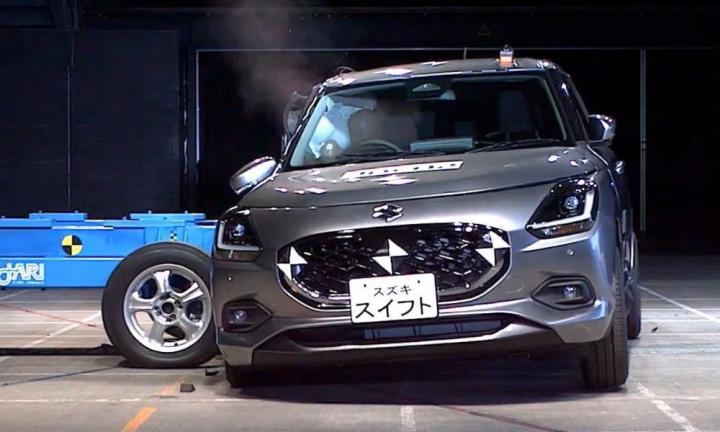






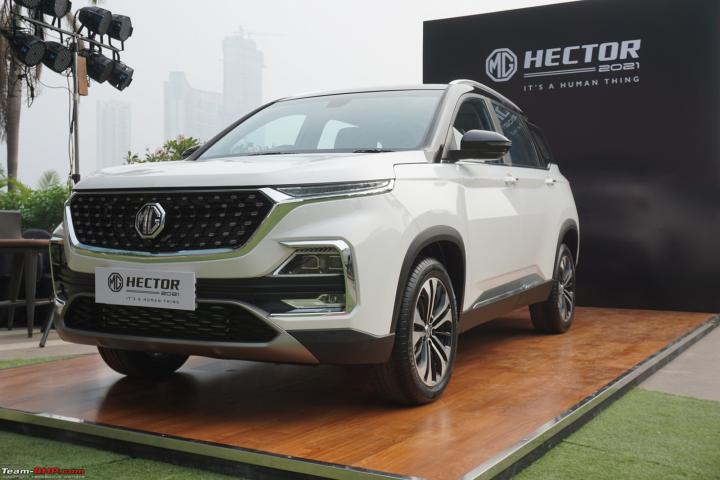
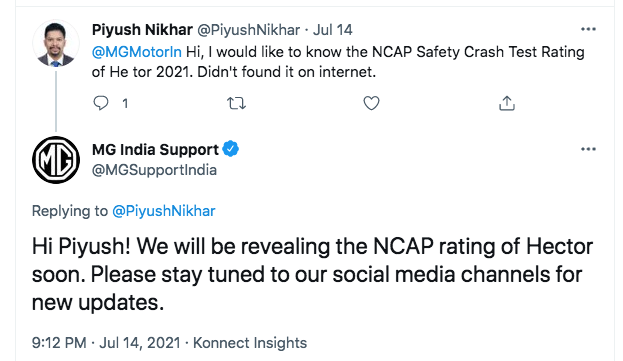
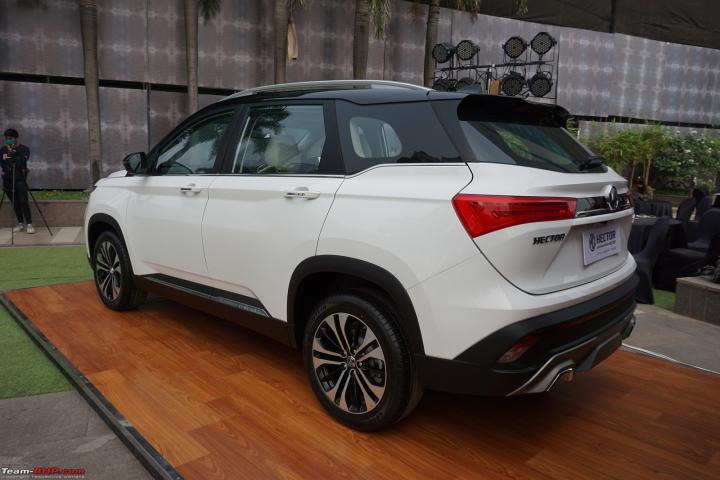








.jpg)
.jpg)
.jpg)
.jpg)
.jpg)
.jpg)
.jpg)
.jpg)
